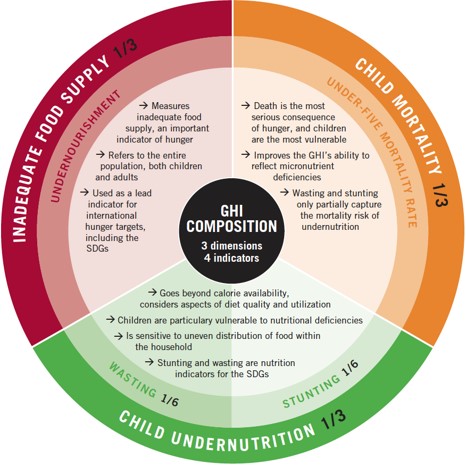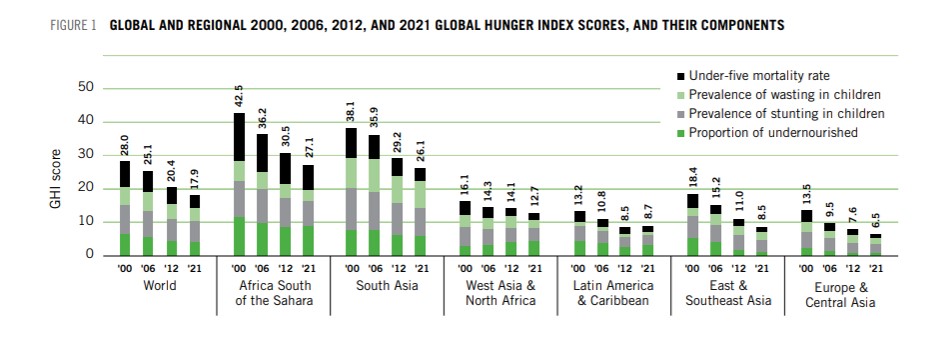
- The Global Hunger Index (GHI) is a tool that was designed to comprehensively measure and track hunger at the global, regional and national levels
- The GHI 2021 report published by Concern Worldwide and Welthungerhilfe assessed 132 countries based on the GHI indicators
- The GHI scores are based on a formula that captures three dimensions of hunger- insufficient caloric intake (undernourishment), child undernutrition and child mortality using four component indicators:
- Undernourishment: the proportion of the undernourished as a percentage of the population
- Child wasting: the proportion of children under the age of five suffering from wasting, a sign of acute undernutrition
- Child stunting: the proportion of children under the age of five suffering from stunting, a sign of chronic undernutrition and
- Child mortality: the mortality rate of children under the age of five
- The index ranks countries on a scale of 0 (no hunger) to 100. The higher the score, the more alarming the hunger problem in the country
- Less than 9.9 indicates little hunger; 10 to 19.9: moderate hunger; 20 and 34.9: serious hunger situation; 35 to 49.9: alarming hunger situation; above 50: extremely alarming hunger situation.


- Based on GHI projections, the world will likely fail to achieve a low level of hunger by 2030.
- Conflict, climate change, and COVID-19 are the most powerful forces driving hunger
- Sub Saharan Africa has the highest rates of undernourishment, child stunting, and child mortality of any region of the world.
- Of major concern is its rising undernourishment rate, which increased from 19.6 percent in 2014–2016 to 21.8 percent in 2018– 2020 (FAO 2021).
